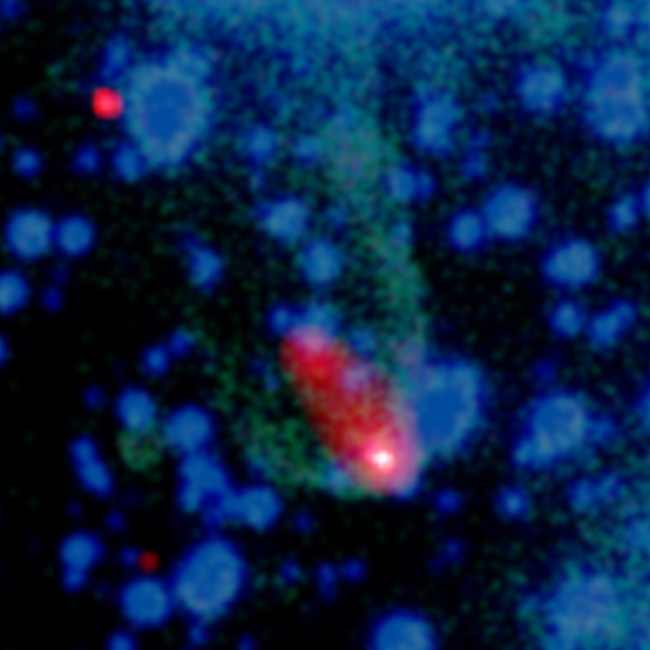
 Credit: X-ray: NASA/CXC/ASTRON/B.Stappers et al.; Optical: AAO/J.Bland-Hawthorn & H.Jones
Credit: X-ray: NASA/CXC/ASTRON/B.Stappers et al.; Optical: AAO/J.Bland-Hawthorn & H.Jones
Born Again
Pulsars, or spinning neutron stars, are born from stellar explosions, and when young spin rapidly. As time passes, they slow down as they lose angular momentum. But surprisingly some very old pulsars spin as fast (or faster) than their younger counterparts. What rejuvenates these old codgers is mass accretion from a companion star, which transfers both mass and angular momentum to the neutron star. A classic case in point is the pulsar B1957+20, known alarmingly as the "Black Widow" pulsar. This pulsar generates powerful jets of particles and anti-particles, and is actually eroding away its companion star. The image above shows X-ray emission (observed by the Chandra X-ray Observatory) in red and white, along with an optical image (from the Anglo-American Observatory) in blue and green. The optical image shows a faint "bow shock" produced by the motion of the pulsar through the Galaxy. The X-ray emission shows that there's a substantial amount of hot gas behind this bow shock, a "cocoon" around the Black Widow, which can be seen in red. The X-ray emission from the pulsar itself shows as a white dot in the image. The pulsar now spins at more than 600 times a second - maybe there's hope for the rest of us?
Published: January 05, 2009
<
HEA Dictionary ● Archive
● Search HEAPOW
● Other Languages
● HEAPOW on Facebook
● Download all Images
● Education ● HEAD
>
Each week the HEASARC
brings you new, exciting and beautiful images from X-ray and Gamma ray
astronomy. Check back each week and be sure to check out the HEAPOW archive!
Page Author: Dr. Michael F. Corcoran
Last modified Monday, 26-Feb-2024 17:20:19 EST


